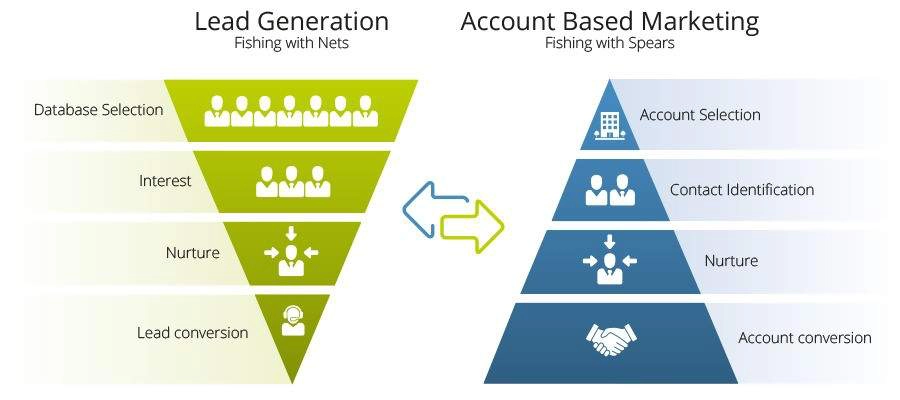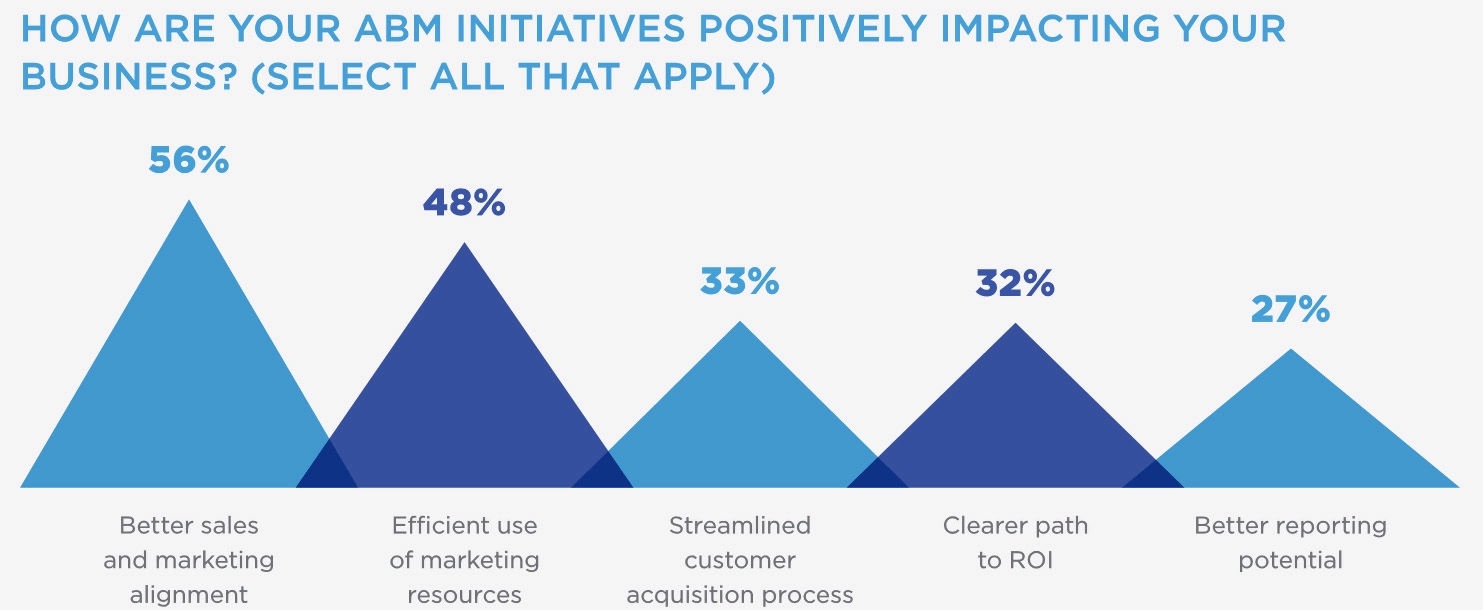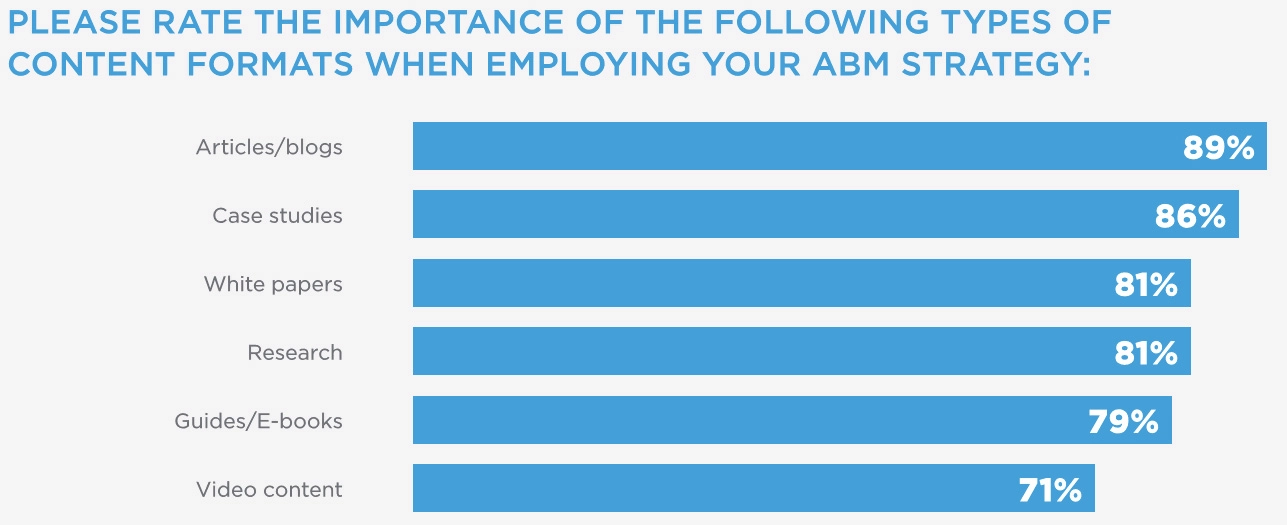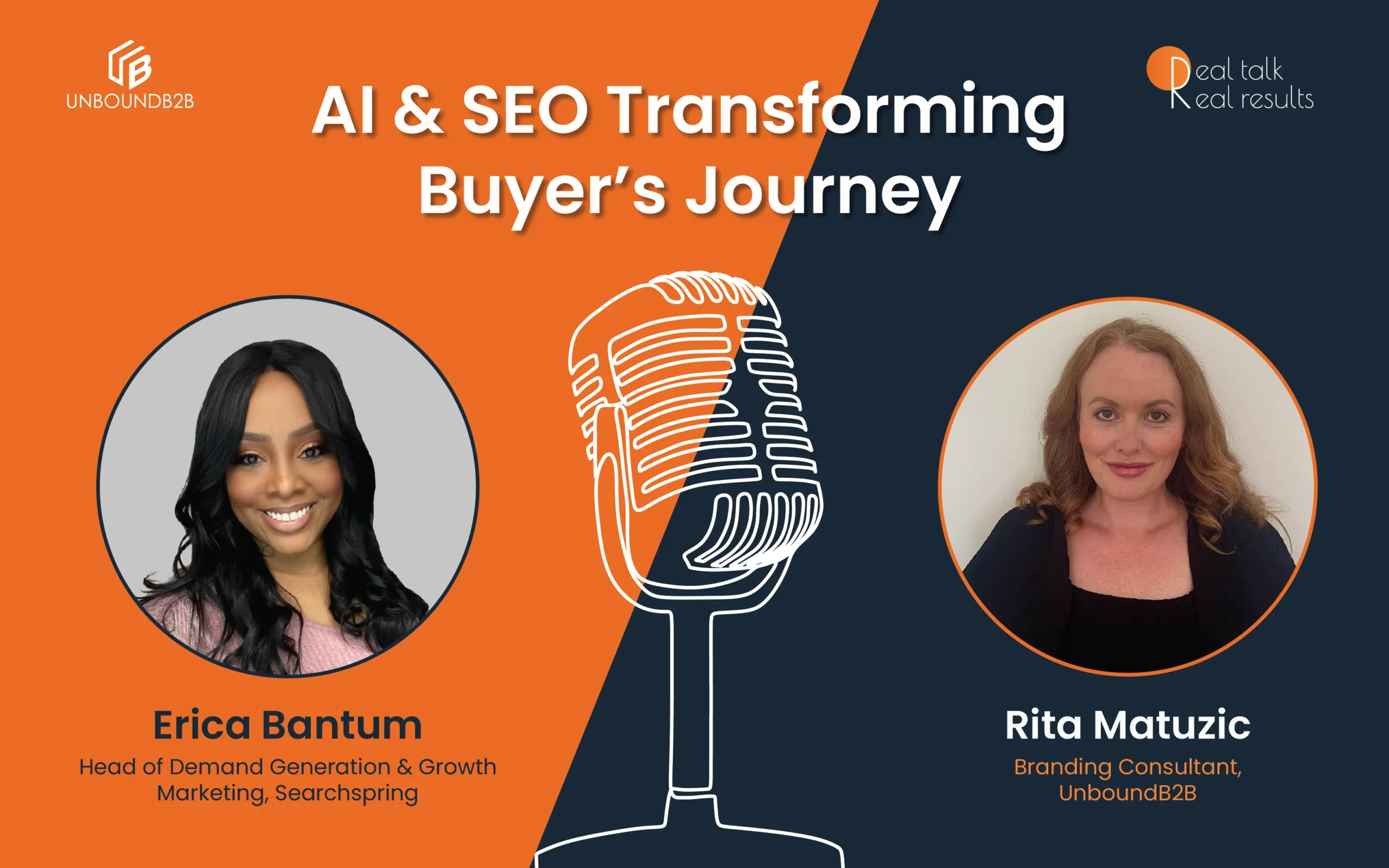
Introduction
Is there a single B2B marketing strategy that suits all businesses regardless of size, industry, business objectives and so on? Probably not. However, a lot of companies can benefit from using different marketing strategies that complement each other in different ways.
Below is a closer look at Account-Based Marketing and Outbound, including some insight into how outbound can be used to augment an ABM strategy. But first, here is some background information about ABM and Outbound to ensure that we are on the same page.
What is ABM?
The term ‘account based marketing’ is said to have been first coined around 2004 by ITSMA. ABM however, did not gain traction until roughly around 2015. The purpose of ABM was to prevent marketers from using generic sales pitches and to instead focus on the essential needs of their top clients.
As such, the underlying principles of ABM include:
- An outside-in approach where understanding the client enough to make a proposition that will benefit their business objectives is paramount as opposed to merely promoting a product just to make a sale.
- Having sales and marketing work as a team for the benefit of the client and not for their own gain
- A focus on customer lifetime value, relationships and reputation and not just on revenue.
- Using tailored campaigns and programs based on market insight, individual buyer insight, and account insight to drive deeper engagement and conversion.
According to recent statistics, 87% of B2B companies report that ABM delivers a higher ROI than any other type of marketing. This is undoubtedly a compelling reason for the growth of ABM in recent times. In fact, another study reports that almost 70% of B2B companies are using ABM to some degree. Some would say that besides outperforming the ROI on other forms of marketing, a part of ABM’s popularity is because it is seemingly diametrically opposed to inbound marketing. The idea here is that instead of chasing every lead (as in the case of inbound marketing), businesses should instead maximize their efforts and focus on engaging only the best accounts.

Figure 1: ABM is an inverted lead generation or inbound marketing funnel
So, in short, ABM is a strategic approach to marketing that focuses on personalized marketing and sales efforts that seek to benefit the client in meeting their business objectives. An in-depth understanding of the client and their needs is paramount in opening the doors to deeper engagement with specific accounts.
What is Outbound Marketing?
A lot of people would define outbound marketing as the opposite of inbound marketing. In other words, a company reaches out to potential clients instead of having the clients reach out to you as is the case in inbound marketing. Outbound is disruptive by nature because it seeks out prospects and may at times make a lead feel bombarded and turned off by the information that has been put in their face. This is why it is sometimes called interruption marketing.
A solution to interruption marketing is instead targeting specific clients who may be interested in an offer. If this targeted outbound marketing sounds like ABM to you, because it is more strategic and personalized, no one will blame you. However, there are clear distinctions between outbound and ABM.
The Difference Between Outbound Sales and Account-Based Marketing
Some of the main differences between ABM and outbound are as follows:
- With ABM, sales and marketing work together consistently and using the same touch points to build relationships targeted at the same list of accounts. With outbound, sales and marketing efforts are directed towards converting leads. Additionally, they do not necessarily work with the same leads.
- ABM is customer-centric and relies on insights to build long-term relationships. It, therefore, relies on internally shared profiles to identify initiatives that will address specific client pain points. With Outbound, the focus is more on pushing a product or service to a potential buyer to drive revenue.
- In an account-based approach, sales and marketing must be aligned. In fact, without sales and marketing alignment, ABM will not work. With Outbound, sales and marketing are not necessarily aligned. They each use their own outbound tactics including email, phone calls, social, office meetings, etc. to generate opportunities with specific leads. Also, with outbound, sales and marketing do not necessarily target the same list of individuals.
- With ABM, marketing has to play a consistent role in delivering an ‘always-on’ strategy. With Outbound, marketing is not necessarily consistent with their efforts and, in fact, often runs an ‘on-off’ strategy that is not explicitly directed at any account in particular but rather on leads.
Which is The Better for Your Business, Outbound or ABM?
In considering the better alternative, it is imperative to understand the benefits of both ABM and outbound. By understanding the strengths of each strategy, a case can be made for actually using both these strategies to turbo-charge the results that sales and marketing seek.
Benefits of An Outbound Strategy
The advantages of outbound strategies are as follows:
- Outbound is predictable: In fact, you can use a mathematical formula to predict how much business your outbound efforts should be able to generate. To do so, decide on the revenue figure you want to produce, then figure out how many people you need to contact to reach the revenue target. If you need more customers and more revenue, just contact more prospects and leads.
- Automation can be used to scale reach and effectiveness. Several automation tools can be used including, LinkedIn Sales Navigator, Discover.org, Salesforce, etc.
- Outbound is proactive in picking customers to approach. As long as a prospective client meets an ideal customer profile, sales and marketing do not have to wait for customers. Instead, sales and marketing have total control of when and how to approach potential clients.
- Outbound allows faster ramping up of customers. From day one, outbound can generate sales immediately. Within a matter of weeks, a business can reach a large number of prospects and leads who will eventually be converted into customers. In contrast, ABM and inbound strategies can take months (usually around 6 months), before results can be realized.
Benefits of An ABM Strategy
Account based marketing benefits for software companies, HR companies, tech companies, manufacturers and across different industry verticals can differ since, by definition, ABM is highly targeted. That said, generally, the advantages of an ABM strategy are as follows:
- Excellent ROI when compared to other marketing strategies.
- It is easier to mitigate risk and scale resources based on performance using automation that allows targeting, marketing, conversion, and upselling to customers.
- Personalized approach. According to the 2018 Salesforce State of the Connected Customer Report, customers expect a personal touch. In fact, 83% of business buyers expect to be treated as a person and not a number to win their business. ABM allows sales and marketing to understand and focus on a potential customer’s specific pain points.
- Sales-marketing alignment. ABM provides a clear strategy for sales and marketing to work together and shares information that will benefit individuals, teams and the entire business as a whole. Through SLAs and integration of siloed tools, sales and marketing have access to the same resources and synergies that can be used for everyone’s benefit, including the clients.
- Better reporting. The effectiveness of an ABM campaign is simpler to measure not just because the focus is on a smaller target group but also because the customer acquisition process is streamlined. Measuring and reporting at the account level in a streamlined process allows comparison of past and present performance which is useful for improving future performance.
 Figure 2: Benefits of an ABM strategy
Figure 2: Benefits of an ABM strategyHow Can ABM and Outbound Amplify Conversions?
Based on everything discussed so far, its not that difficult to see how ABM powered by outbound can deliver amazing results. Basically, you can use Outbound’s direct approach to reach lots of leads and gather as much insight about them, and then fine-tune your strategy by pulling together your resources and going after each individual in the DMU (decision-making unit) based on the information that you have gathered.
Here are a few more ways that outbound can amplify conversion within a broader ABM strategy:
ABM Relies on Data and Insights that Can Be Acquired Through Outbound
Outbound marketing’s targeted approach for one-on-one interaction with potential buyers provides plenty of opportunities to obtain useful data that an Account Based Marketing strategy needs. By creating and keeping track of ideal customer profiles, an outbound targeted approach can reach individuals in a DMU right away and gather useful information that will fuel an ABM strategy.
Relationship Building is the Cornerstone of Outbound and the Foundation of ABM
Outbound channels are based on one-on-one interaction to initiate and build meaningful relationships that will end up with conversions. On the other hand, authentic customer-centric relationships are an underlying principle of ABM. When the two are used together to complement each other, the results will speak for themselves.
Outbound Delivers The Right Content Messaging to Targeted Prospects
One of the main objectives of an ABM strategy is to ensure that content is provided to the correct individuals in the decision-making unit because this content is what drives the right purchasing stakeholders through the sales funnel. Not only does outbound deliver targeted content to targeted prospects but it also provides certainty that the prospect has interacted with the message. Additionally, outbound can provide content at a large scale which further amplifies what you can achieve with ABM.

Figure 3: How different types of content impact an ABM strategy
Outbound Connects Stakeholders at Every Point of the Buying Cycle
If ABM is to be successful, potential clients must remain engaged throughout the buying cycle before they can become clients. If engagement is not achieved throughout the buying process, then potential clients will easily leak out of the pipeline. Outbound is useful in this regard because it keeps targeted clients or decision makers engaged throughout the sales funnel in the following ways:
- Top-of-funnel (TOFU). Outbound can be used to build awareness, initiate contact, gather research, profile, provide immediate responses and distribute early stage resources.
- Middle-of-funnel (MOFU). Outbound can be used to nurture stakeholders, deliver targeted content, and keep close engagement with targeted prospects and leads who in the ABM context are the decision makers in an account.
- Bottom-of-funnel (BOFU). Outbound can retarget based on buying signals, provide immersive experiences such as walk-throughs and live demos, schedule one-on-one meetings, and follow-up on actionable engagements
Outbound Helps ABM to Align Sales and Marketing
One of the core principles necessary for ABM to work is sales and marketing alignment. Outbound is excellent at gathering research and providing insight that is useful to prioritize accounts. Through reliable and trustworthy insight, sales and marketing are compelled to work together on high-value accounts because they are likely to have the highest ROI. Furthermore, outbound’s direct approach and more in-depth engagement facilitate more productive conversations and follow-up that translate into more and faster conversions.
Conclusion
Outbound is critical to the success of ABM. By coordinating sales and marketing outbound efforts, B2B companies can ensure that their ABM campaigns have the scale and personal touch that outbound channels offer. When both ABM and Outbound are used together, there is little doubt that the results will be much better than using each strategy on its own.
Our blog
Latest blog posts
Tool and strategies modern teams need to help their companies grow.

There are various methods to target your ideal customers in programmatic advertising,...

Personalization is the key to digital marketing and SEO success for e-commerce organi...

B2B companies must retain current customers and attract new ones to keep their revenu...



